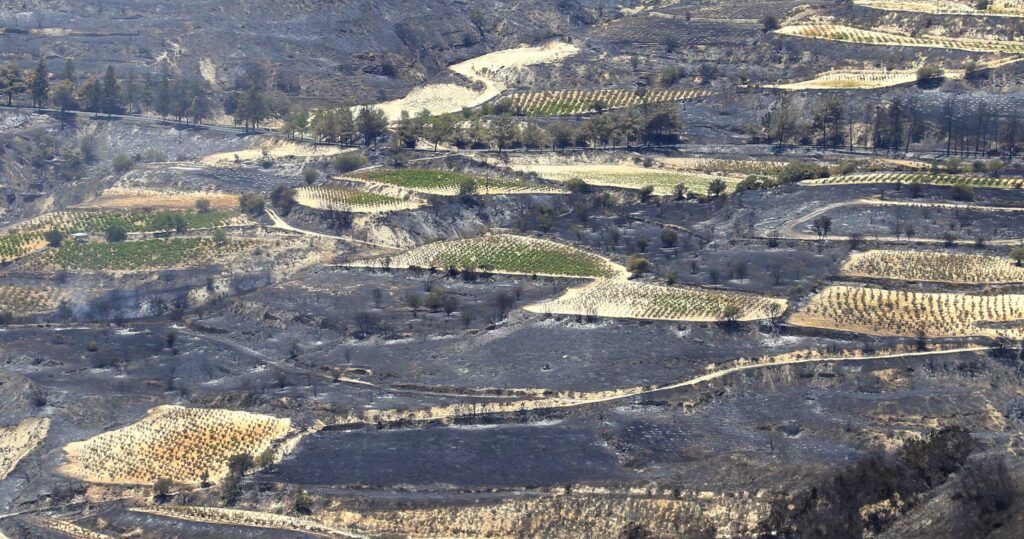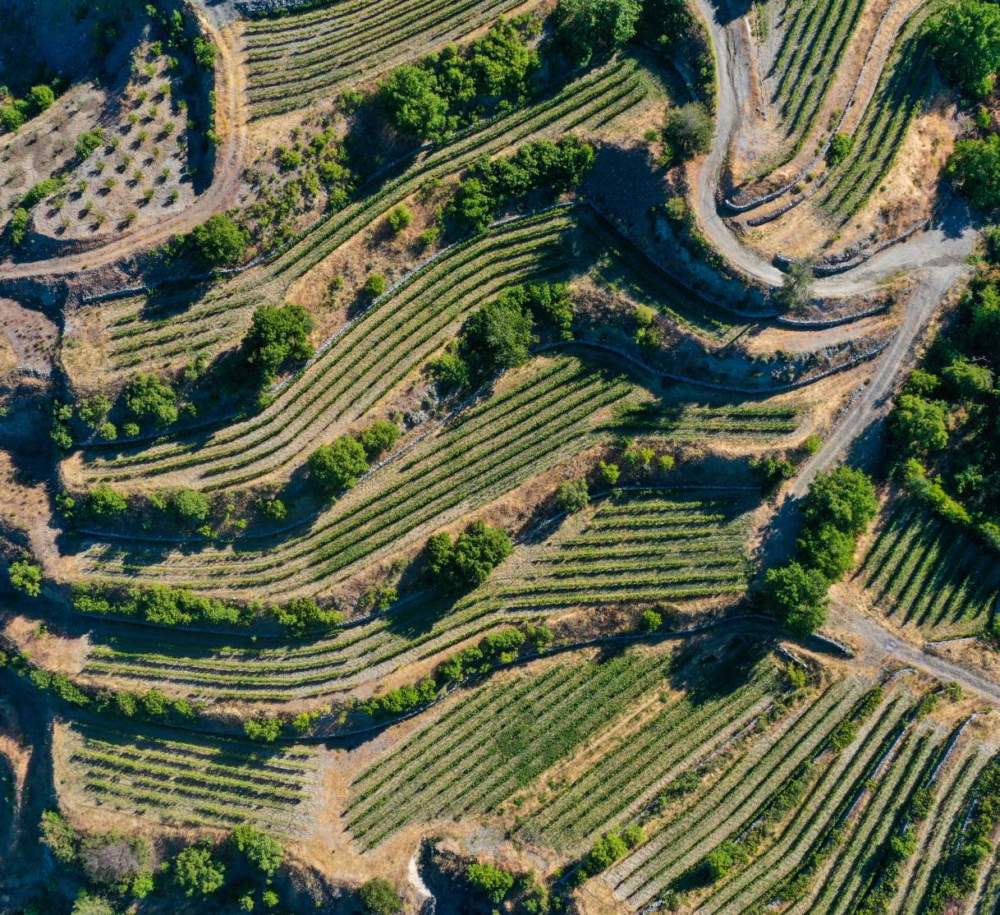Filenews 2 August 2025 - by Florence Kythreotou
In many Mediterranean countries, crop abandonment has emerged as a determining factor in the intensity and spread of fires. And yet, the active and well-kept vineyards with the well-known dry stone walls may be a crucial embankment. Not only against fire, but also against the abandonment of the countryside and the desertification of the landscape.
The recent fire in mountainous Limassol has left behind deep wounds — on the land, on the people, on the soul of the place. Lives were lost, vineyards and properties were destroyed. Communities with a historical relationship to the land experienced hours of terror and uncertainty. But behind the ashes and grief, an old truth is revealed: landscape and countryside management is not just a technical issue — it is a condition of survival.

Over the last 40 years, the Cypriot vineyard has suffered a serious decline. In the 1990s, in the context of harmonization with European policies, the subsidy of grubbing-up was chosen instead of restructuring. Huge areas were abandoned and surrendered to the wild vegetation. Slopes overgrown with vines were left uncultivated and impassable—and this is one of the reasons why fire so easily found its way.
However, as this decline progressed, a reverse course began dynamically: young winemakers with vision highlighted local varieties, invested in the vineyard and created wines that gave a new identity to Cypriot wine. They were the ones who brought back life to mountainous Limassol and to forgotten vineyards, creating a new narrative. Today, some of them see the lands that they have managed to revive with difficulty, have been destroyed. The upward trend of the sector has been severely halted.
However, the phenomenon is not only Cypriot. In California, Napa Valley is often on fire. The fires of 2017 and 2020 swept through iconic vineyards, destroying plants and leaving ashes in place of grapes. There, however, the reaction was not resignation, but restoration with a plan, with strengthening infrastructure, with the creation of fire protection zones, with investment in sustainability. Many units returned to production stronger, more conscious.
According to relevant studies, 80-90% of vineyards that suffer mild to moderate damage, can fully recover within 1-2 years, as long as the appropriate measures are taken in time: proper irrigation, careful pruning, protection from diseases. In Chile, the 2017 fires burned the Maule and Itata valleys, but winegrowers saw the vine logs reborn from the ashes. They chose organic farming, respect for the environment, resilience. The fire became an opportunity for redefinition.

Examples from the European Union
In many Mediterranean countries, the abandonment of vineyards has already been correlated with the intensity and extent of the fires. On the contrary, where they are preserved and cultivated, vineyards function as natural fire protection zones, reducing the continuity of fuel and facilitating access for firefighting teams. Here are typical examples:
Portugal
In the mountainous region of Dão in Portugal, the Casa de Mouraz organic vineyard lost half of its area to fires. But the owners did not dwell on the loss: they redesigned based on agroecology, soil restoration and community participation with co-financing. Thus, the vineyard became common property of the community.
Spain – Catalonia
In the La Plana de Manlleu region in Catalonia, cultivated vineyards are integrated into mosaic rural landscapes, along with pastures and other land uses. This diversity acts as a natural brake on the spread of fire. In contrast, in inland Spain, the abandonment of vineyards and other crops led to the accumulation of biomass, increasing the intensity and speed of the spread of fires.
Italy – Sardinia
Studies in northwestern Sardinia have shown that abandoning farmland, including vineyards, leads to greater intensity and duration of fires. On the contrary, preserved vineyards and other crops (olive groves, citrus groves) function as fire protection zones, interrupting the continuity of vegetation and facilitating the intervention of firefighters.
France – Provence
In the south of France, particularly in Provence, fires destroyed both active and abandoned vineyards. The absence of human care contributed to the rapid spread of the fire.
Vineyards act as natural fire protection zones
The European Commission points out that cultivated vineyards can act as natural fire protection zones, because they interrupt the continuity of fuel and facilitate extinguishment.
The message is clear: the restoration of the vineyard will not come through fragmentary subsidies. It takes a vision, a plan and—above all—a reconnection with the earth.
These experiences show the deepest value of the vineyard: it is an ally of prevention and ecology. Well-groomed vineyards can act as natural barriers to the spread of fire — as long as they are not left to be abandoned. At the same time, the return of cultivation to degraded areas strengthens the landscape, shields the soil, and revitalizes society.
The example of Alto Douro in Portugal, recognized as a UNESCO World Heritage Site, shows that a historic vineyard is not just a tradition, it is a political strategy. And Cyprus is not lagging behind: it has rare varieties, special geomorphology and valleys with dry stone walls. Pitsilia, Afamis, Krasohoria, Laona can be transformed into models of agrotourism and environmental regeneration. It is enough to have the will, support and strategy.
The full dimensions of the disaster have not yet been captured. What is urgent, however, is not only rehabilitation. It is the mapping of a new course, a strategy that will see the vineyard not as a remnant of the past, but as a living infrastructure of protection, culture and resilience. For from the earth covered with ashes, life can grow again.
